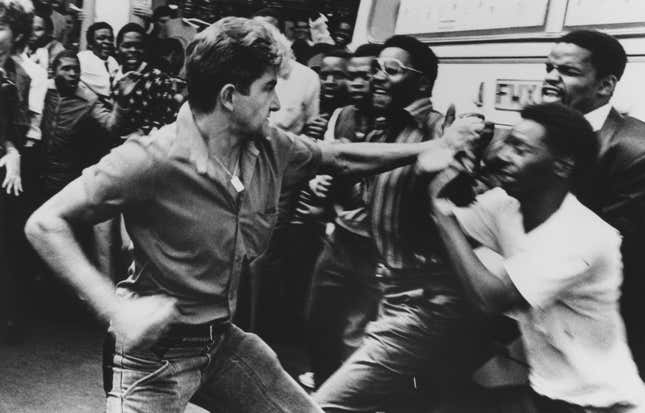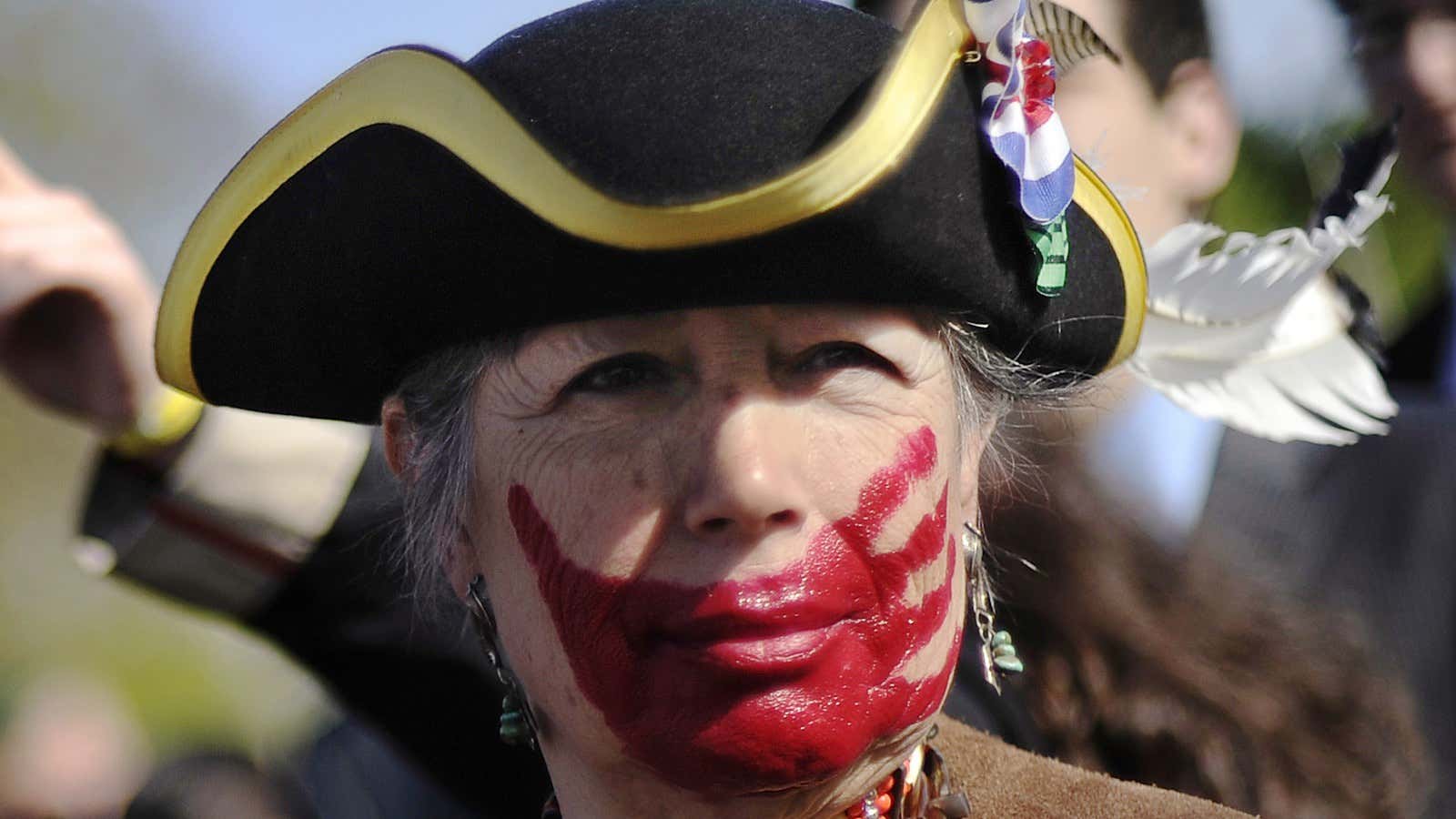One year ago, my colleagues at current affairs and culture blog “Africa is a Country” and I decided the time was right for White History Month. In the US, February is recognized as Black History Month, an event which invariably attracts complaints from people who consider it witty to argue there should be a similar month for white people. Listening to these ridiculous debates play out—again—we thought, “Ok. Fine. You want White History Month? We’ll give you White History Month.”
For inspiration, we re-read the superb essay British journalist Gary Younge wrote for The Nation back in 2007. “So much of Black History Month takes place in the passive voice. Leaders ‘get assassinated,’ patrons ‘are refused’ service, women ‘are ejected’ from public transport. So the objects of racism are many but the subjects few,” Younge wrote. He continued:
In removing the instigators, the historians remove the agency and, in the final reckoning, the historical responsibility … There is no month when we get to talk about [James] Blake [the white busdriver challenged by Rosa Parks]; no opportunity to learn the fates of J.W. Milam and Roy Bryant, who murdered Emmett Till; no time set aside to keep track of Victoria Price and Ruby Bates, whose false accusations of rape against the Scottsboro Boys sent five innocent young black men to jail. Wouldn’t everyone–particularly white people–benefit from becoming better acquainted with these histories?

With these motivations in mind, we we kicked off the first White History Month with a fascinating post by Kathleen Bomani on leather from human skin allegedly turning up in 1880s Philadelphia, a piece on Britain’s mass torture regime in Kenya in the 1950s, and that time the South African government sent a delegation to the US to find out how Native American reservations worked.
This year is no different. In an effort to educate our loyal readers—and hopefully the broader Internet—about white history, we are blogging this month about important incidents like the acquittal of the G4S guards who killed Jimmy Mubenga aboard a British Airways plane in 2010—despite the many racist jokes found on the guards’ mobile phones. Our readers have already learned from rapper Wanlov the Kubolor exploring why white people are known as “obroni” in Ghana.
Since we assume this version of White History may have been left out of most history textbooks, we’ll also be reminding everyone of the day Miles Davis was accosted by the NYPD, as well that time Bill Clinton temporarily blocked Nelson Mandela’s attempt to manufacture cheap generic anti-retrovirals at the height of the HIV/AIDS crisis.
To be fair, the idea of a critical White History Month has been around for a while. It was only after launching the project that writer Ed Pavlić told us that James Baldwin had himself outlined a similar proposal during an off-the-cuff speech in Washington DC back in 1986. Asked about “race relations,” Baldwin responded:
I want to establish, a modest proposal, white history week. Because the answer to these questions is not to be found in me, but in that history which produces these questions. One of the things that most afflicts this country is that white people don’t know who they are or where they come from. That’s why you think I’m a problem. But I am not a problem. Your history is. And as long as you pretend you don’t know your history, you’re going to be the prisoner of it.
We’re in this together, Baldwin told the club, but it’s not enough to simply talk about each other.
“When white people, quote unquote ‘white people,’ talk about progress in relation to black people, all they are saying and all they can possibly mean by the word progress is how quickly and how thoroughly I become white,” he noted. “Well, I do not want to become white. I want to grow up and so should you.”
Put simply, we think much of what passes for popular history in the United States and elsewhere, particularly as far as race is concerned, is a bunch of sentimental mush that encourages a complacent attitude towards the societies we now live in.
Yes, the history of racism includes many triumphant stories of individuals and organizations that have prevailed in the face of overwhelming odds. But while that’s a comforting way of viewing the past, that story—which the great scholar Saidiya Hartman calls the “celebratory narrative of the oppressed”—is only a small part of the broader cultural picture.
Our White History Month, designed as a collective project that brings together contributors from a wide range of backgrounds, is about insisting that the vile history of racism is still with us, that it shouldn’t be whitewashed or wished away, but grappled with as part of what it means to live more responsibly in the world.
People often tell us that White History Month makes them uncomfortable, that we should simply move on. But history isn’t just there to help you feel good about yourself. We are trying, in the spirit of Baldwin, to move on. That will not be possible if we never learn about—or choose to wish away—those parts of our history that we find painful or inconvenient.
